Long COVID manifests with T cell dysregulation, inflammation and an uncoordinated adaptive immune response to SARS-CoV-2
- PMID: 38212464
- PMCID: PMC10834368
- DOI: 10.1038/s41590-023-01724-6
Long COVID manifests with T cell dysregulation, inflammation and an uncoordinated adaptive immune response to SARS-CoV-2
Abstract
Long COVID (LC) occurs after at least 10% of severe acute respiratory syndrome coronavirus 2 (SARS-CoV-2) infections, yet its etiology remains poorly understood. We used 'omic" assays and serology to deeply characterize the global and SARS-CoV-2-specific immunity in the blood of individuals with clear LC and non-LC clinical trajectories, 8 months postinfection. We found that LC individuals exhibited systemic inflammation and immune dysregulation. This was evidenced by global differences in T cell subset distribution implying ongoing immune responses, as well as by sex-specific perturbations in cytolytic subsets. LC individuals displayed increased frequencies of CD4+ T cells poised to migrate to inflamed tissues and exhausted SARS-CoV-2-specific CD8+ T cells, higher levels of SARS-CoV-2 antibodies and a mis-coordination between their SARS-CoV-2-specific T and B cell responses. Our analysis suggested an improper crosstalk between the cellular and humoral adaptive immunity in LC, which can lead to immune dysregulation, inflammation and clinical symptoms associated with this debilitating condition.
© 2024. The Author(s).
Conflict of interest statement
M.J.P. reports consulting fees from Gilead Sciences and AstraZeneca, outside the submitted work. S.G.D. reports grants and/or personal fees from Gilead Sciences, Merck & Co., Viiv, AbbVie, Eli Lilly, ByroLogyx and Enochian Biosciences, outside the submitted work. T.J.H. receives grant support from Merck and consults for Roche. All other authors report no conflicts of interest.
Figures





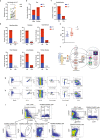


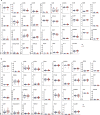
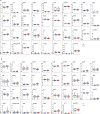

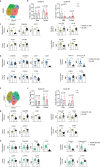

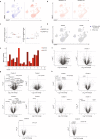
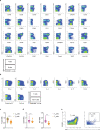
Update of
-
Long COVID manifests with T cell dysregulation, inflammation, and an uncoordinated adaptive immune response to SARS-CoV-2.bioRxiv [Preprint]. 2023 Aug 4:2023.02.09.527892. doi: 10.1101/2023.02.09.527892. bioRxiv. 2023. Update in: Nat Immunol. 2024 Feb;25(2):218-225. doi: 10.1038/s41590-023-01724-6. PMID: 36798286 Free PMC article. Updated. Preprint.
References
MeSH terms
Substances
Grants and funding
- R01 AI158013/AI/NIAID NIH HHS/United States
- P30 DK063720/DK/NIDDK NIH HHS/United States
- T32 AI007334/AI/NIAID NIH HHS/United States
- K23 AI157875/AI/NIAID NIH HHS/United States
- K24 AI174971/AI/NIAID NIH HHS/United States
- S10 RR028962/RR/NCRR NIH HHS/United States
- S10 OD018040/OD/NIH HHS/United States
- L30 AI147159/AI/NIAID NIH HHS/United States
- L30 AI126521/AI/NIAID NIH HHS/United States
- K23 AI146268/AI/NIAID NIH HHS/United States
- R01 AI159260/AI/NIAID NIH HHS/United States
- R01 AI141003/AI/NIAID NIH HHS/United States
LinkOut - more resources
Full Text Sources
Medical
Molecular Biology Databases
Research Materials
Miscellaneous

